From August 19th to 23rd, Peter von Känel and Silvan Schüpbach opened a new route on the north face of the Eiger. In doing so, they followed their ideal of not using bolts. For five days, the two climbed, unsure whether they would even get up with the style they had chosen. Her adventure to the summit of the Eiger ended on August 24th, adding another chapter to her climbing history.
Silvan Schüpbach and Peter von Kaenel could at the first ascent of Renaissance (30 SL, 7c) the entire route through the Eiger north face free climbing except for two short passages. They did not set any bolts and left a total of eight bolts. "The predominantly excellent rock is beautifully structured and allows the attachment of mobile safety devices in many places," enthused the two first ascents.
A repeat tour is an adventure and a treat for anyone with a penchant for trad climbing large walls.
Silvan Schuepbach and Peter von Känel
Peter and Silvan, congratulations on your first Trad ascent! How did you come across this line?
Peter von Känel: Silvan originally discovered this grandiose line and developed it with great effort. I am very grateful to him for asking me to be a partner for this project. As a team, Silvan and I work very well and we complement each other perfectly.
Before the tour, we discovered rock structures in the steepest part of the wall on a paragliding aerial photograph that looked promising in terms of climbing and mobile belaying. Nevertheless, the rock quality on site surprised us again in a positive way.
Quite a few pitches of this tour find their way into my personal “Hall of Fame” of the best rock I have ever had under my fingers and soles.
Peter von Kaenel
I very much hope that the line remains free of bolts and thus gives those who repeat it similarly intensive moments for the photo album of life as we do.
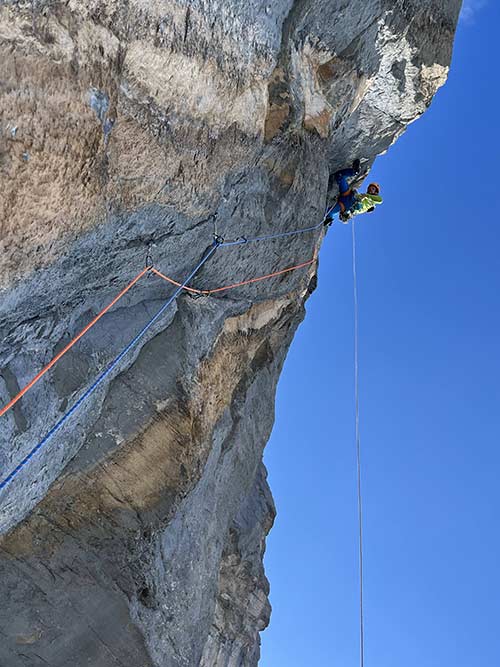
Why was it important for you to open a new route in this style?
Silvan Schüpbach: In recent years, many new climbing routes have been set up on the north face of the Eiger. I was able to repeat many of these routes myself and am fascinated by the quality and beauty of these climbs, which were first climbed with a lot of sweat and skill.
These routes all have in common that they were made possible with the help of electric drills and bolts; that the rocks of the Eiger can be climbed, but the protection is "guaranteed" with modern machines. I don't find this reprehensible, but a logical development of climbing.
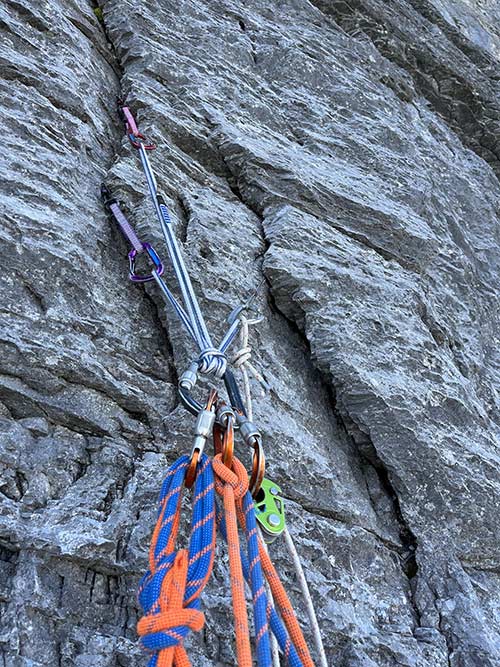
I've been wondering for a few years whether you can use today's climbing skills on the Eiger but with the safety equipment (without a drill) of yesteryear?
Silvan Schüpbach
And did you find an answer to that in Renaissance?
Silvan Schüpbach: Coincidence, luck and skill came together for us from August 19th to 23rd: One of the last untouched parts of the Eiger wall allowed us to do our thing - on the occasion of a multi-day weather window with high temperatures and no precipitation.
We would be delighted if, in the future, more young mountaineers and climbers would rely on traditional safety equipment again - and herald a renaissance in climbing large (and small) walls.
Peter von Känel: Silvan and I have been working intensively on climbing in limestone without bolts for a number of years. Looking back, I see our joint first ascents on the Stockhorn and Dündenhorn as intermediate stations that ultimately made the "Renaissance" possible for us.
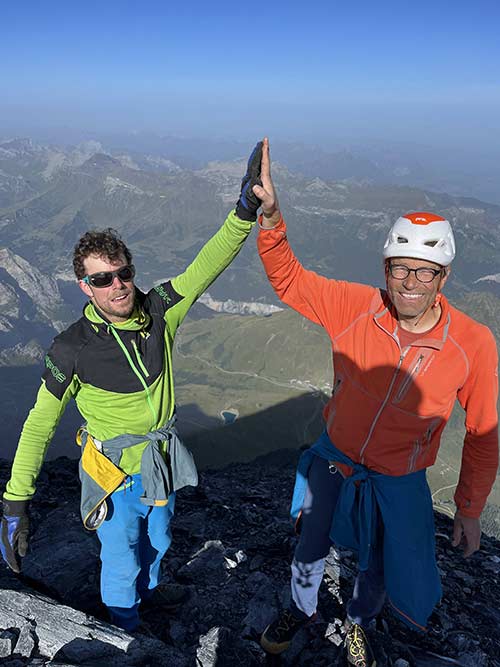
What does it mean to you to climb routes without bolts, only with mobile belays?
Peter von Känel: Before Silvan got me hooked on climbing without bolts, I made my first ascents on alpine multi-pitch tours with the help of bolts. Thanks to self-imposed rules when drilling, e.g. setting up from below, no hook ladders, no cliff holes, etc., this type of first ascent has given me many great adventures, but my appetite for climbing without bolts grew with increasing experience with mobile belays.
I have more or less reached my maximum possible climbing level, so I see trad climbing as the next step in my personal development as a climber. While climbing level is also important in trad climbing, it's not the all-important factor. Rather, it requires a balanced mix of different skills.
Looking back, I see the first ascent of the "Renaissance" as my high point in this process so far.
Peter von Kaenel
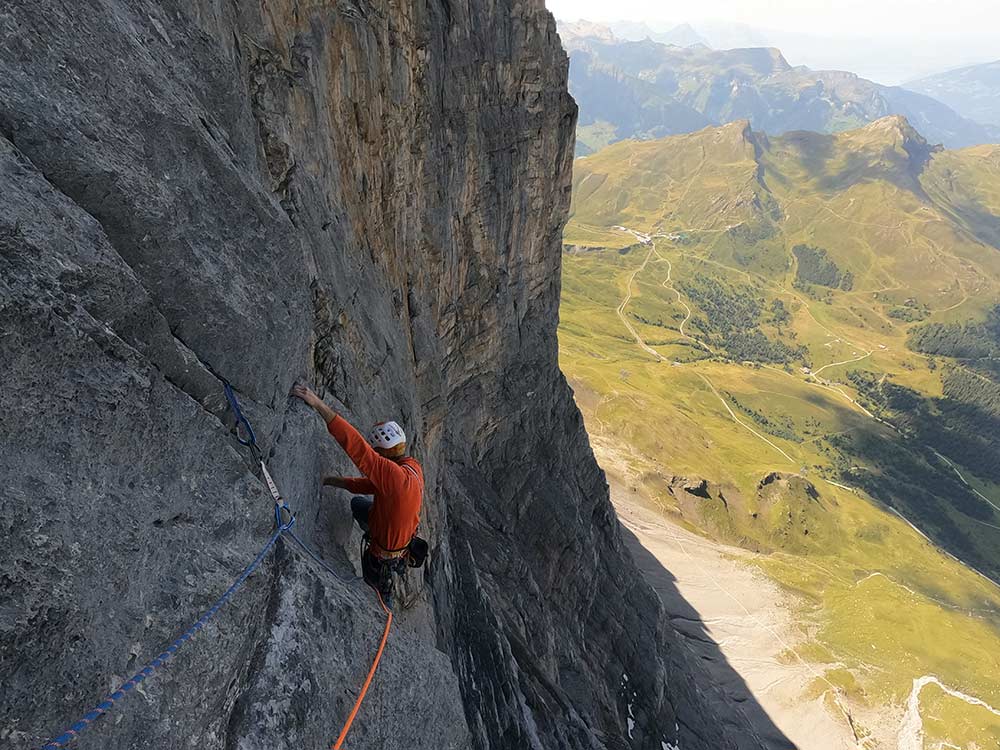
The combination of climbing, reading the rock, setting mobile belays and constantly balancing risk allowed me to lead efficiently and with a good sense of control. This despite the fact that the tour pushed me to my limits several times.
The thought of climbing a virgin wall with mobile belay devices on my harness makes me nervous every time.
Peter von Kaenel
When the time comes and I start climbing, the nervousness gives way to an almost hypnotic focus and clarity. These moments are extremely intense and are among the unforgettable highlights of my life.
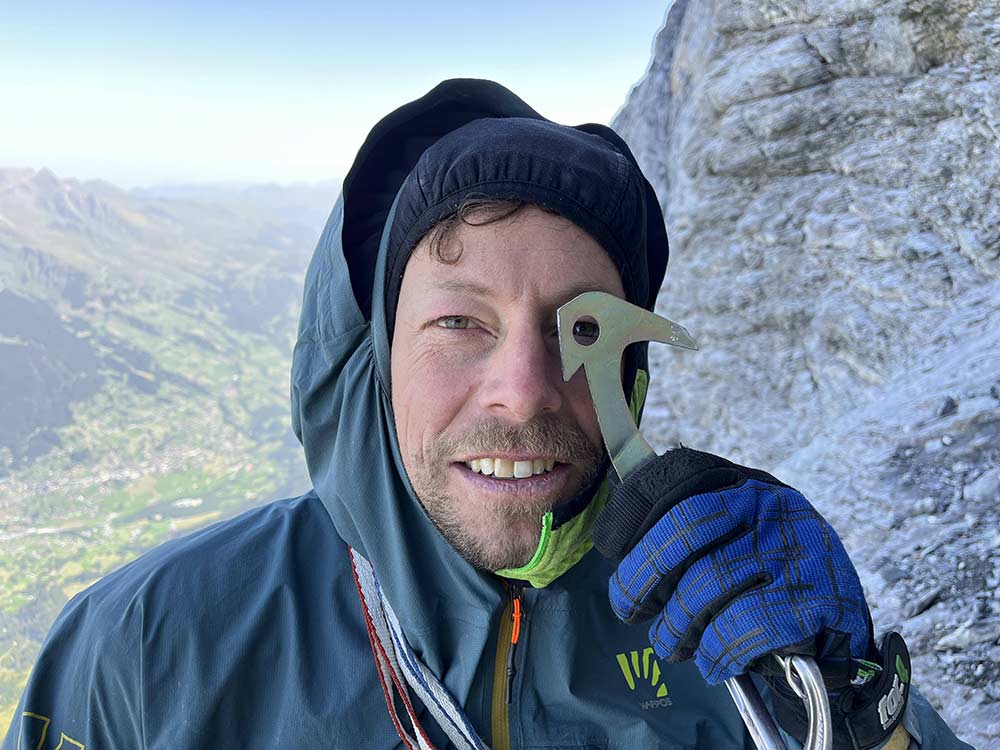
Renaissance – information about the route
The route overcomes the "Rote Fluh" on its right edge and, after a short walk (possible bivouac), leads relatively directly through the compact, partly overhanging wall to the right of the Czech pillar. In the upper part, the route follows the Ghilini Piola for three lengths.
While this descends over simple rocks to the right onto the west ridge, the "Renaissance" offers three more beautiful lengths until you finally descend on the west ridge at 3480 m. There are several sheltered bivouac sites near the route, but most of them only offer a single place to sleep. For a repetition it is therefore advisable to take a portaledge with you.
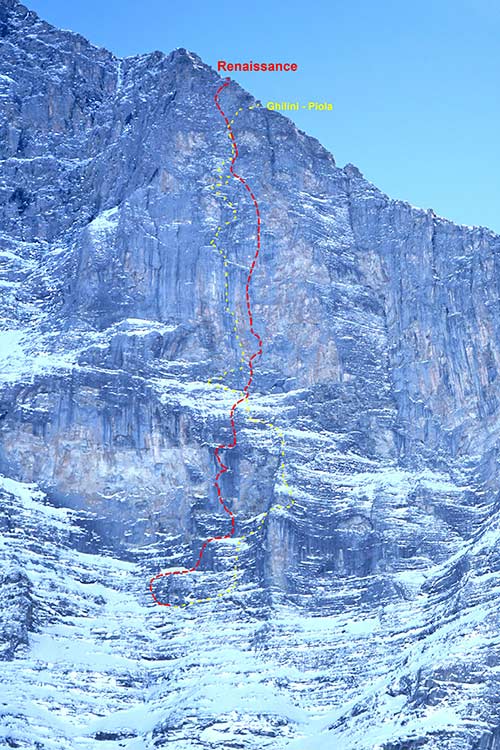
The lack of bolts gives the route a remarkable originality and seriousness. The route cannot simply be consumed, it demands commitment. On the other hand, this massively increases the experience and adventure value, because even repeating the route feels a little like the first ascent.
In addition to a solid level of climbing, the route requires a practiced eye, both for the climbing line and for attaching mobile intermediate safety devices. A realistic assessment of one's own abilities and a permanent, conscious control of the objective risk during the lead is also helpful.
Technical material used
- Double ropes 60 m
- 2 sets of cams #0.2-2 (totem cams an advantage)
- chocks
- peckers
- impact hook
- Skyhook
- portaledge
That might interest you
- Frigo-Combo (450m, M7/6a): Schüpbach and Von Känel's youngest adventure
- This is what the IFSC says about RED-S and sports anorexia
Do you like our climbing magazine? When launching the climbing magazine Lacrux, we decided not to introduce a paywall because we want to provide as many like-minded people as possible with news from the climbing scene.
In order to be more independent of advertising revenue in the future and to provide you with even more and better content, we need your support.
Therefore: Help and support our magazine with a small contribution. Naturally you benefit multiple times. How? You will find out here.
+ + +
Credits: Cover picture Peter von Känel

